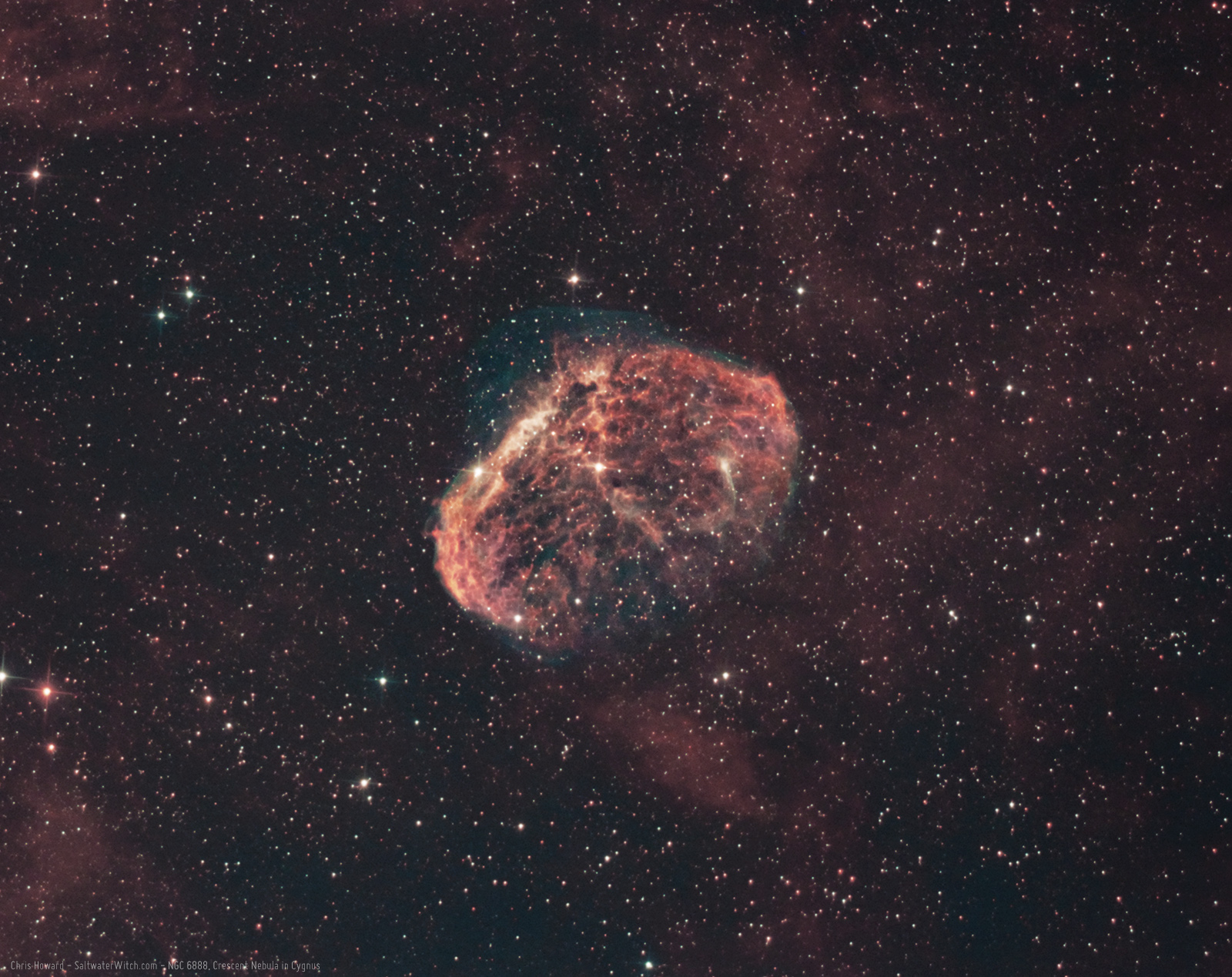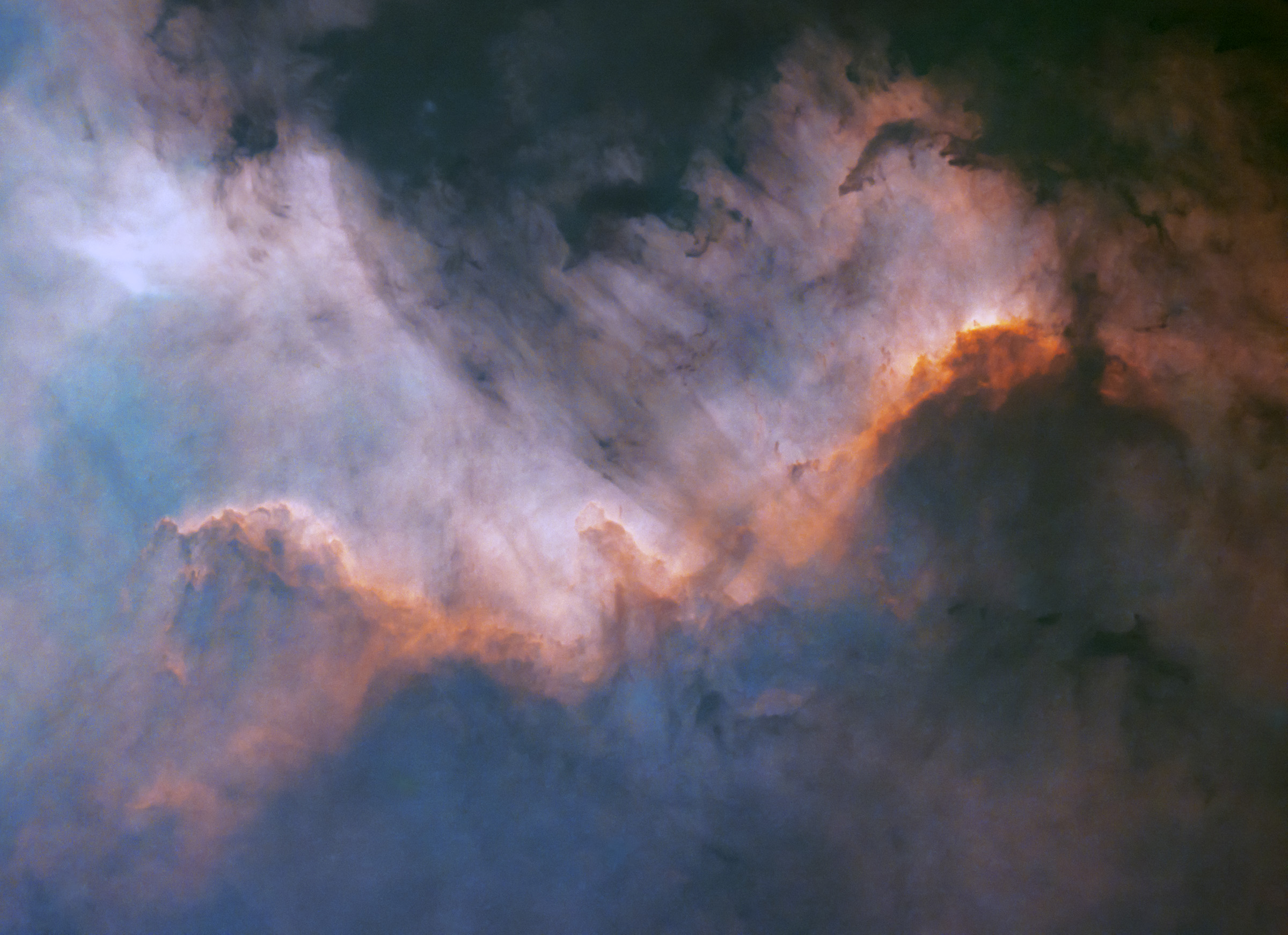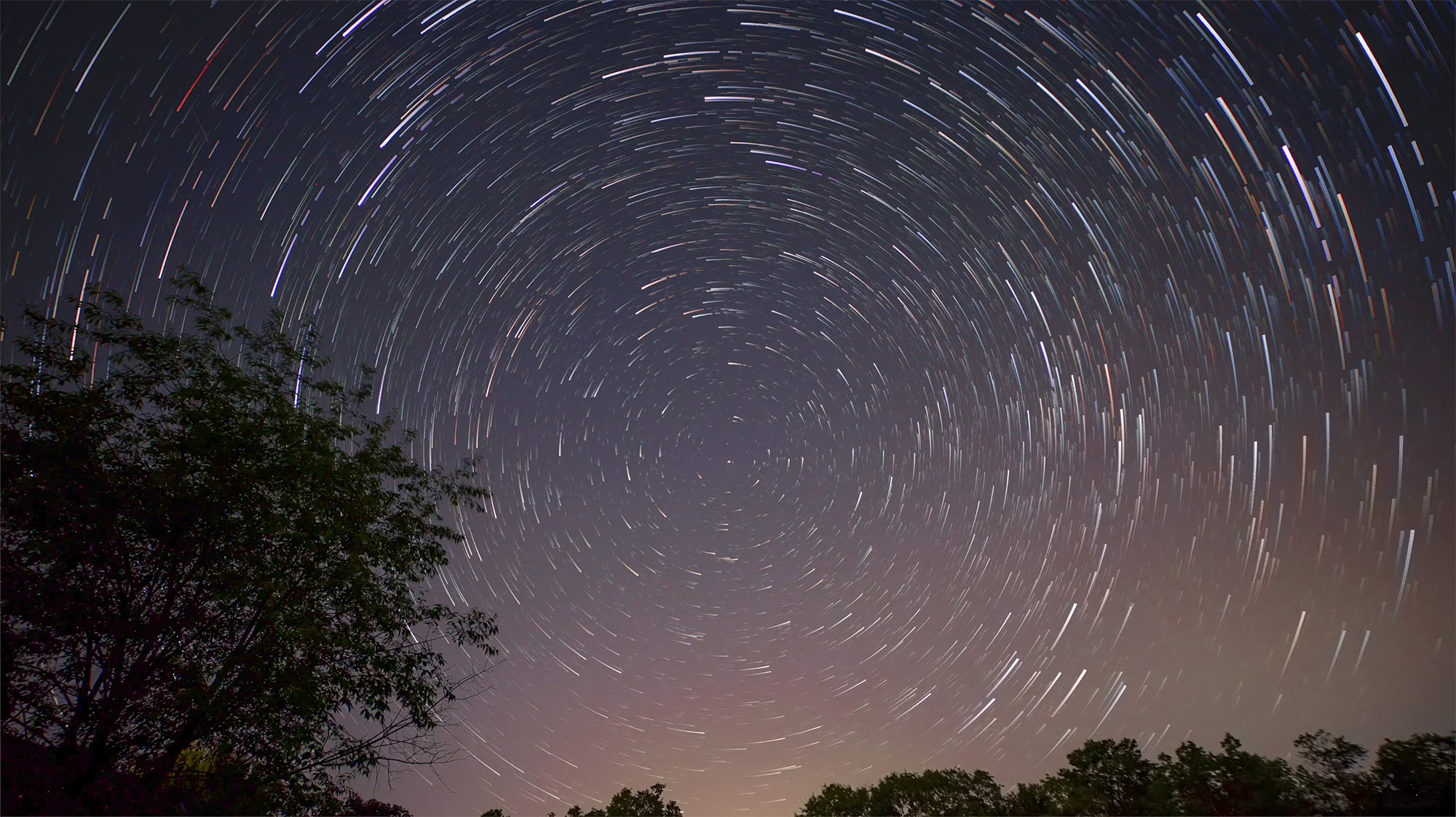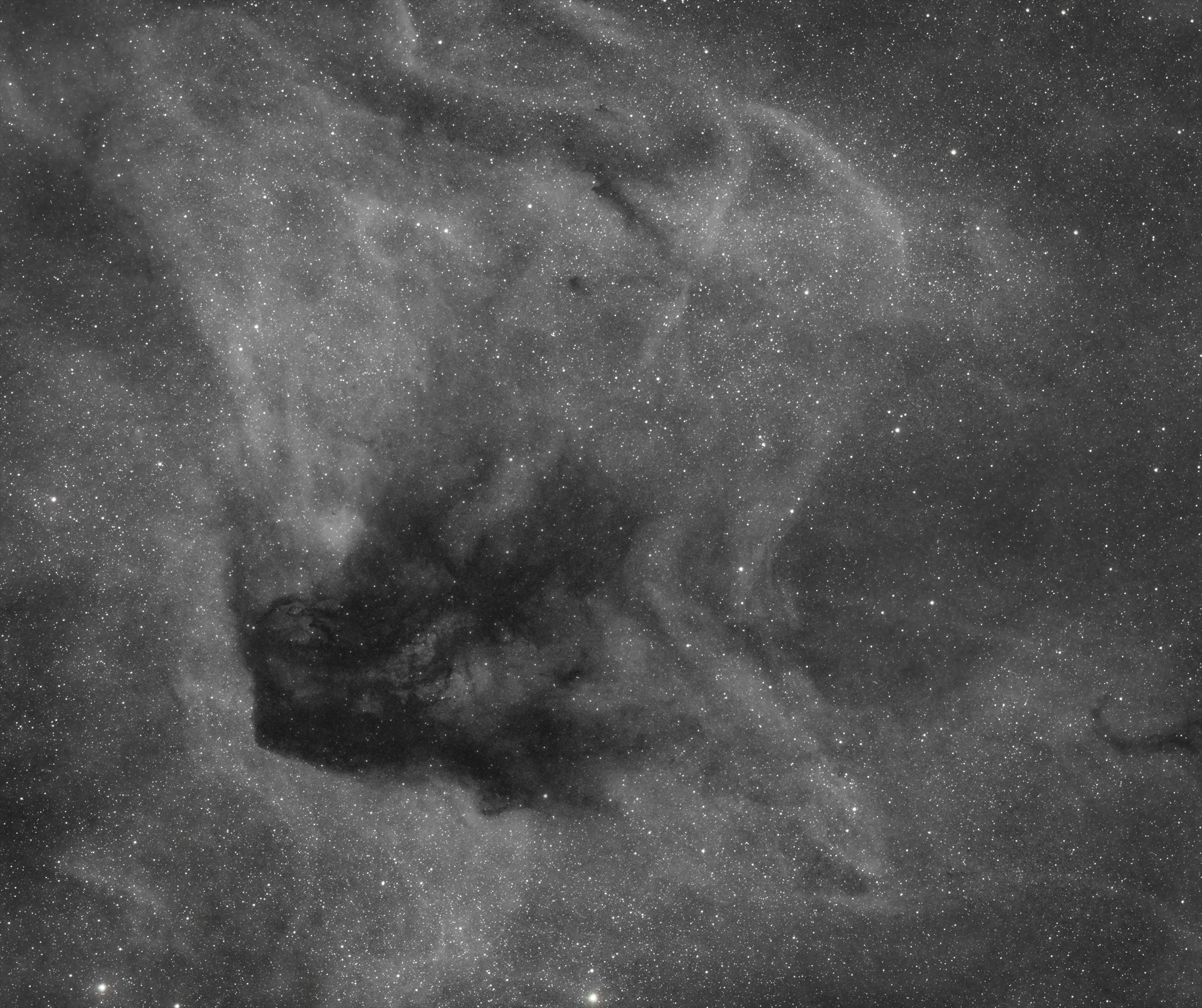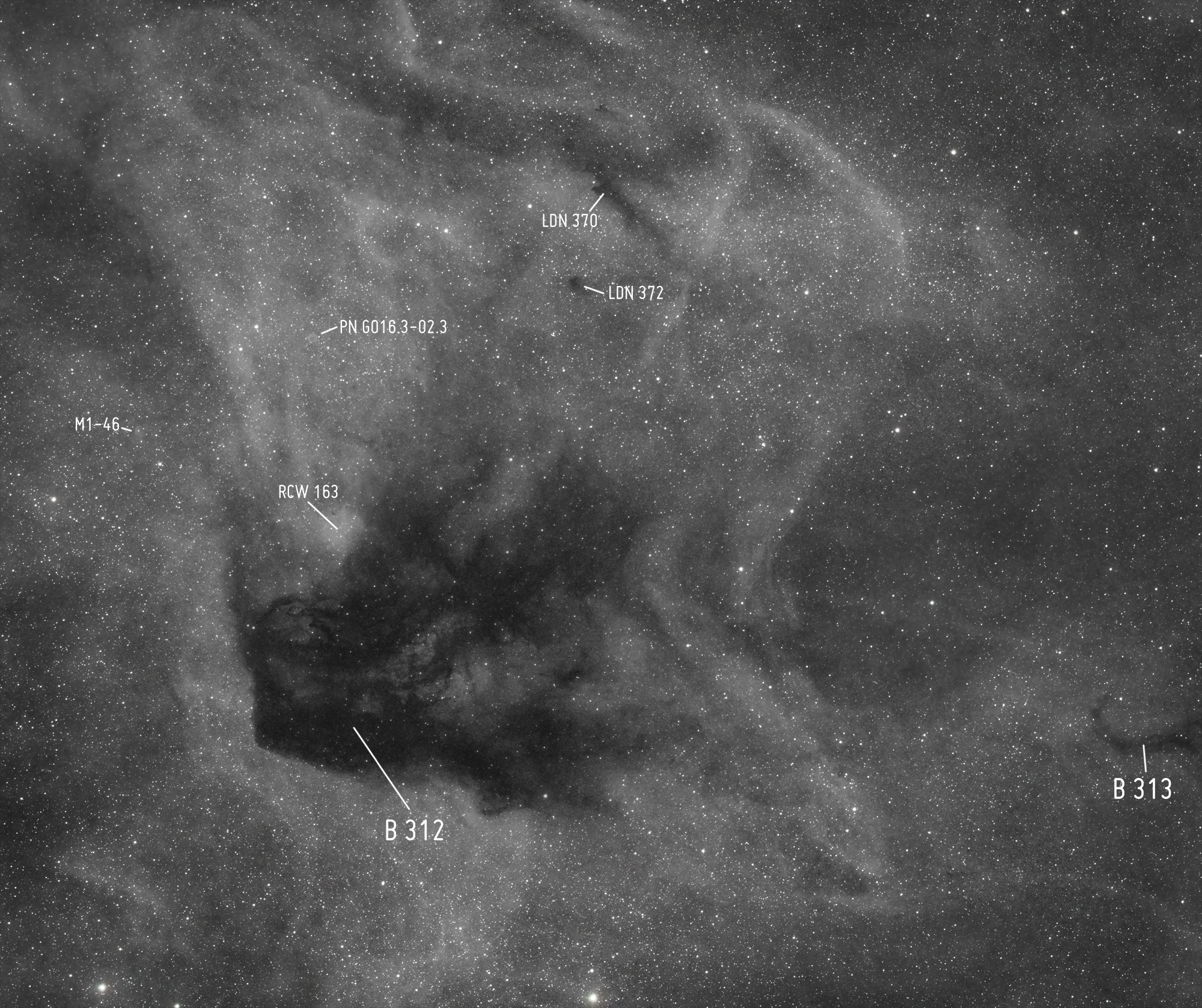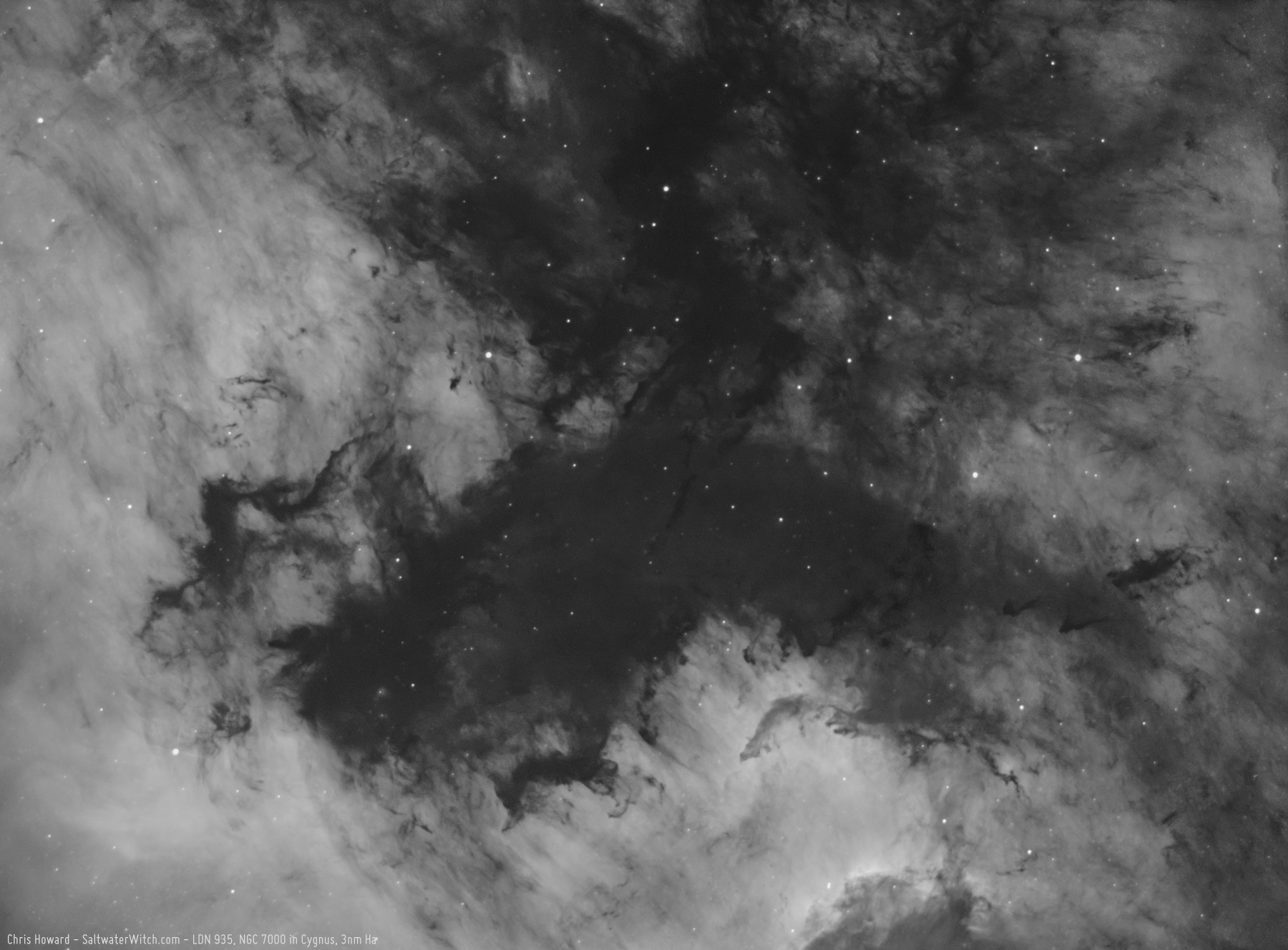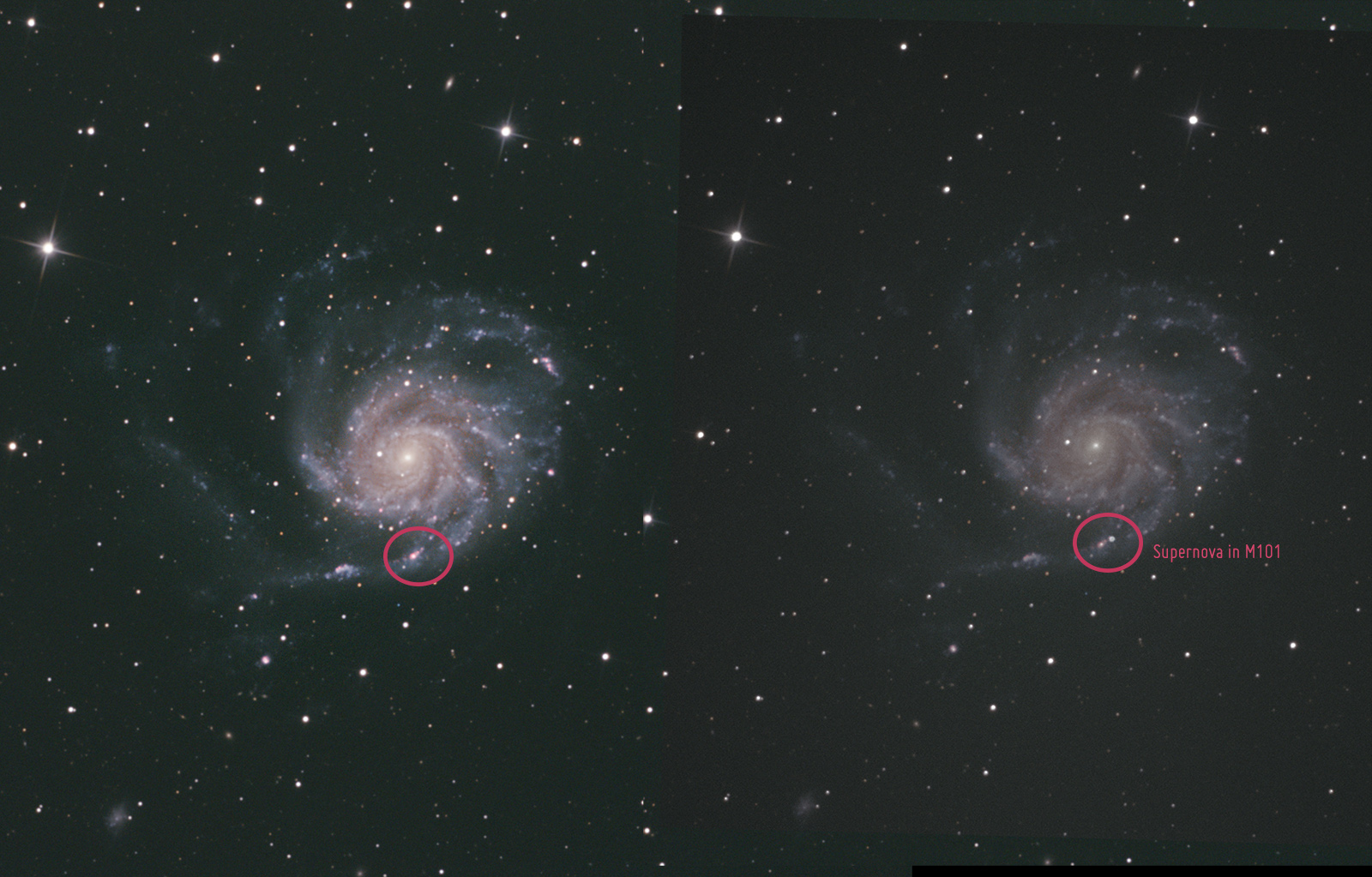Starless NGC 7000 Narrowband
The Cygnus Wall in NGC 7000 (Caldwell 20), the North America Nebula in the constellation Cygnus. These clouds of molecular hydrogen and oxygen are about 2600 lightyears away from us, and to provide some scale, this frame is about a hundred lightyears from one side to the other, or about 600 trillion miles or 950 trillion kilometers. Notes: stars removed with StarNet2 to highlight the softer wisps of dark nebulae scattered in front of the bright emission nebula beyond.
Posted June 12, 2023
The North Celestial Pole from my Backyard
A star trails view of the NCP (North Celestial Pole) from my backyard, five hours of 15-second exposures stacked together to show the Earth's rotation. That star in the middle is the North Star, Polaris, the star at the end of the handle in the Little Dipper asterism. Polaris is very close to the NCP, only 4 degrees off the actual point in space that marks our planet's North Celestial Pole. Basically, if you're standing in a fixed position on the surface (say, in coastal New Hampshire at around 43° latitude) and draw an imaginary line along Earth's axis of rotation, out into space, until you reach a single point in space--that's the celestial pole, and from your perspective, all stars will rotate around that point. In the southern hemisphere, looking south, you have the SCP, South Celestial Pole, which doesn't have a bright star in close proximity--so imagine this image without that bright point of light in the center.
What is also interesting in this image is that stars have color. Blue stars "burn" hotter and faster, redder stars are generally cooler and longer-lived. Our star, the Sun, is somewhere between, a medium-sized main sequence star about halfway through its 11-billion-ish year lifespan.
Notes: 1104 x 15-second exposures, Sony A7s, Irix 15mm f/2.4 lens, stacked in StarStax.
Posted June 11, 2023
B312, B313, and planetary nebulae PN G016.3-02.3 and M1-46 in Scutum
Dark nebulae B312, B313, and planetary nebulae PN G016.3-02.3 and M1-46 in Scutum. 36 x 240-second Ha subs with the William Optics GT 81 and ZWO ASI1600MM-Pro monochrome camera.
Posted June 7, 2023
Dark Nebulae in Cygnus, 3nm Ha
LDN 935, 933 (dark nebulae), the "Gulf of Mexico" region of NGC 7000, the North America Nebula in Cygnus.
Dark nebula Dobashi 2961, et al. below the North America Nebula, 3 nanometer hydrogen-alpha:

Atlas and Catalog of Dark Clouds Based on the 2 Micron All Sky Survey
Kazuhito Dobashi, Publications of the Astronomical Society of Japan, Volume 63, Issue sp1, 25 January 2011, Pages S1–S362, https://doi.org/10.1093/pasj/63.sp1.S1

Posted May 31, 2023
NGC 6888 without stars
NGC 6888, the Crescent Nebula in Cygnus (stars removed). Apertura 800mm f/4 newtonian, 28 x 300 exposures with the ZWO ASI071MC cooled to -10C, Optolong dual-band l-eXtreme filter with 7nm bandpasses at Ha and OIII, Sky-Watcher EQ6-R Pro mount, William Optics 32mm/120mm FL guide scope + ZWO ASI290MM guide camera. The Crescent is close to 5000 lightyears away, about 25 lightyears across at its widest point, roughly 237 trillion kilometers wide (150 trillion miles). The dense clouds of oxygen and hydrogen are lit up with the intense radiation of a central star; the whole structure is expanding and accelerating away energetically, very bright against the velvety bed of ionized hydrogen that spans most of the constellation Cygnus. With the stars removed from the image, NGC 6888 almost looks solid instead of a vast bubble of interstellar gas and dust.

Posted May 30, 2023
NGC 6820 (Sh2-86) in Vulpecula
Nebula NGC 6820 (Sh2-86) in the constellation Vulpecula, surrounding the open star cluster NGC 6823. 48 x 300-second subs in 3nm Hydrogen-alpha. The intense radiation from that central cluster of stars is hollowing out the nebula, pushing the gas and dust in all directions, creating pillars of trailing material where energetic star light meets dense pockets of gas, or faster cooling heavy elements with higher inertia. Everything in that rough circular area in the bottom right is accelerating away from those bright and very hot stars in the center. I believe the dark nebulae across the middle and top are part of Dobashi 2045? (I really want to know the story with that weird faintly-backlit tail of interstellar dust at the lower left. Definitely something cool going on there).
Interesting info on the formation of pillars and "elephant trunks" in nebulae:
Jonathan Mackey, Andrew J. Lim, Dynamical models for the formation of elephant trunks in H II regions, Monthly Notices of the Royal Astronomical Society, Volume 403, Issue 2, April 2010, Pages 714–730, https://doi.org/10.1111/j.1365-2966.2009.16181.x
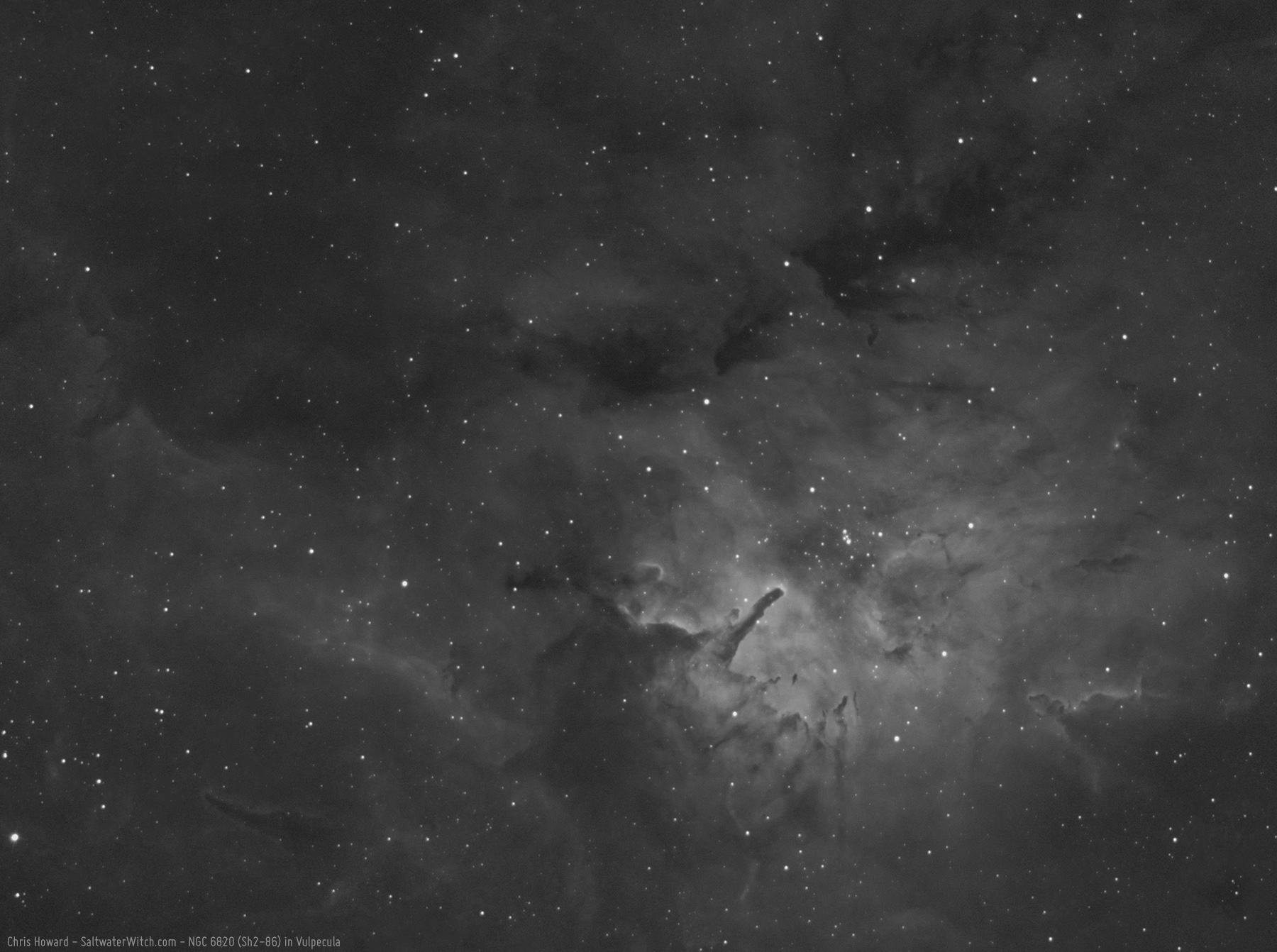
Went back last night and captured 48 subs of OIII:

Posted May 29, 2023
Supernova in M101
On May 19th, 2023--three days ago, Japanese astronomer Koichi Itagaki discovered a supernova in M101 galaxy, 21 million lightyears away. I shot M101 last week, and tonight I took one exposure in Hydrogen-alpha (narrowband) and overlaid the images. That bright dot circled on the right is SN 2023ixf, the new supernova.
Posted May 22, 2023
NGC 6888, Crescent Nebula in Cygnus
Another night out with the Optolong l-eXtreme dual narrowband filter, and again, I'm really surprised at the color and detail captured with the two 7nm band passes, one around 504nm for OIII and the second at 656nm for hydrogen-alpha. Star colors look pretty good, and overall this is closer to true color (red and blue generally where they're supposed to be) than hubble palette SHO images. I captured 55 subs at 300 seconds (5 minutes) each, but threw out all but 28 for processing--it was really windy last night and that just throws chaos into tracking and guiding. I have been doing narrowband imaging with monochrome cameras and separate filters for each bandpass for almost a decade, and that's still my preferred method for capturing deep sky objects like the Crescent, but it's also really promising what you can capture with a cooled color camera in one imaging session.

Cropped to NGC 6888:
